

A S PECIAL P UBLICATION OF
T HE L IBRARY OF A MERICA

Copyright 2019 by Literary Classics of the United States, Inc.,
New York, N.Y.
All rights reserved.
Published in the United States by Library of America.
www.loa.org
No part of this book may be reproduced in any manner
whatsoever without the permission of the publisher, except in the
case of brief quotations embodied in critical articles and reviews.
Illustrations by Charles M. Schulz copyright 2019 by
Peanuts Worldwide LLC.
See the
for copyright information for the previously published essays in
this volume. All other contributions are copyright 2019 by
the individual authors of the works.
Distributed to the trade in the United States by Penguin Random
House Inc. and in Canada by Penguin Random House Canada Ltd.
eISBN 9781598536171
For Sam
Contents


 early twenty years after the death of Charles M. Schulz, in the midst and perhaps the throes of the twenty-first century, there still seems so much to say about Peanuts, the singular comic strip that occupied the artist for the greater part of his life and, through a miraculous ensemble of hand-drawn children and an independent-minded beagle, won over the world. The book in your hands proves just how eager people are to think and write about the strip: over two-thirds of its pieces have been newly composed for this volume, and only two of the previously published essays reprinted here were written before 2000. To a degree that his cartoonist colleagues would surely have envied, Schulzs creations, those lil folks dreamed up in a time and place now fairly distant from us, speak as powerfully as ever to so many people, including, as this book shows, some of the finest writers and cartoonists working today.
early twenty years after the death of Charles M. Schulz, in the midst and perhaps the throes of the twenty-first century, there still seems so much to say about Peanuts, the singular comic strip that occupied the artist for the greater part of his life and, through a miraculous ensemble of hand-drawn children and an independent-minded beagle, won over the world. The book in your hands proves just how eager people are to think and write about the strip: over two-thirds of its pieces have been newly composed for this volume, and only two of the previously published essays reprinted here were written before 2000. To a degree that his cartoonist colleagues would surely have envied, Schulzs creations, those lil folks dreamed up in a time and place now fairly distant from us, speak as powerfully as ever to so many people, including, as this book shows, some of the finest writers and cartoonists working today.
When it comes to Peanuts, the phrase meaning of life in this books subtitle is well earned. The writers featured here reveal that to contemplate Peanuts is to move between two complementary spheres, one vast and existential, the other as small as the strips diminutive characters. The overall mood and atmosphere of Peanutsits braided threads of joy and melancholy, disappointment and wondersuggest a philosophical orientation, a guide for the perplexed about how one might live in a world that is never easy and is often less than kind. But no one has ever read Peanuts as if it were a treatise, sermon, or self-help manual. Its individual frames and compacted scenes, unfolding over the four-panel vignettes that more than one writer in this book have likened to haiku, are what have stuck with us since our childhood encounters with Schulzs illustrated cosmos. Here on the tiniest of stages we find illuminated the ongoing human business of friendship and love, anger and frustration, fantasy and heartacheand pretty much everything else.
The Peanuts Papers, accordingly, adopts a dual perspective on Schulzs fifty-year magnum opus. Its writers think big but are attuned to particular moments, resonances, and their own highly personal associations. Especially in its opening section, The Big Picture, they tackle the strips larger significance in all its glorious entirety. Adam Gopnik invokes Chekhov, Beckett, and Thomas Merton while exploring how instinctively, with how little effort, Schulz makes the big preoccupations of serious literature and spiritual crisis into an unforgettable set of daily comic parables; Ivan Brunettis trenchant thoughts about Schulzs achievement and influence include a comparison of the artists seismic impact on the comics to Brandos on movie acting. Such brilliant high-altitude assessments are joined with nuanced examinations of individual strips, as with Peter D. Kramers extended gloss on the running gag of Lucy and her psychiatry booth. The many recollections and memoirs included, particularly in the concluding section, True Stories, provide powerful testimony of how Peanuts can be woven into the very fabric of a life, as it has been for so many.
This collection is varied, even kaleidoscopic, but it also offers the pleasure of detecting echoes and correspondences among writers who come to Peanuts from their own distinct perspectives. Its hard, for example, not to recall Sarah Boxers remark about uncomfortable truths lurking beneath Peanutss deceptive ambience of cozy suburban conviviality when reading, a few pages later, this reminiscence of Jennifer Finney Boylan: It was in reading Peanuts, lying on the floor beneath the piano in my parents suburban home in Newtown Square, Pennsylvania, that I first saw evidence of the terrible truth: that my adorable parents resided in a cartoon universe. It was Charlie Brown and his friendschildren who lived in a world defined by unrequited lovewho resided in the real one. The Peanuts Papers celebrates Schulzs real-world cartoon universe by allowing this sort of dialogue among its contributors. Even matters they all can agree on, above all the view that Peanuts is of endless interest and remains deserving of the highest praise, can be expressed through a wealth of fruitful approaches. What youll discover in the following pages is what many of the most passionate Peanuts fans already know: that like all the enduring monuments of American culture, Schulzs daily saga in miniatureof the Brown and Van Pelt children, their friends, and an indefatigable dogis large and wise and contains multitudes.
Lights, please.


Adam Gopnik
 harles Schulzs great comic strip has hardly lacked for admirers or attention since it first appeared in 1950in itself somewhat surprising, since the strip had a long ramp-up to sublimityand so to join in the ranks of those who sing its praises might seem as redundant as Charlie Brown taking one more run at that football. But one point in particular is perhaps not made often enough, and so still worth makingthat, for all of its charm and, and for all the television specials drawn from it that rightly occupy a place of affection in our revolving American holidays, Halloween to Christmas and back again, the actual comic spirit of the strip at its best, from the early 1960s to the mid-1970s, is astoundingly, rewardingly, bleak and mordant.
harles Schulzs great comic strip has hardly lacked for admirers or attention since it first appeared in 1950in itself somewhat surprising, since the strip had a long ramp-up to sublimityand so to join in the ranks of those who sing its praises might seem as redundant as Charlie Brown taking one more run at that football. But one point in particular is perhaps not made often enough, and so still worth makingthat, for all of its charm and, and for all the television specials drawn from it that rightly occupy a place of affection in our revolving American holidays, Halloween to Christmas and back again, the actual comic spirit of the strip at its best, from the early 1960s to the mid-1970s, is astoundingly, rewardingly, bleak and mordant.


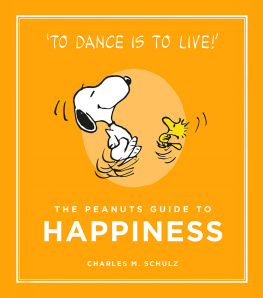
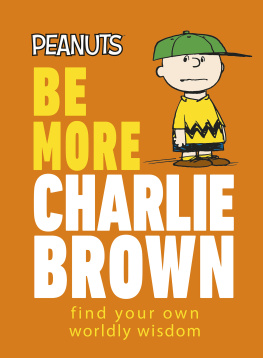
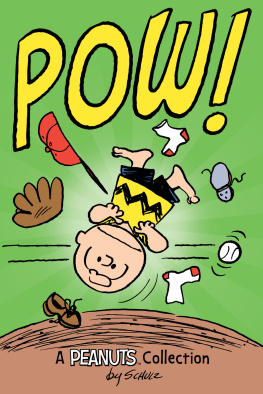
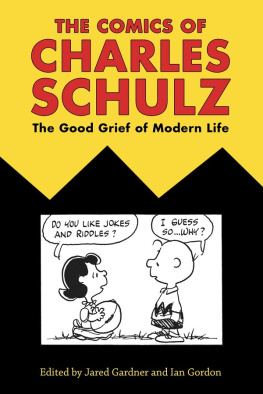
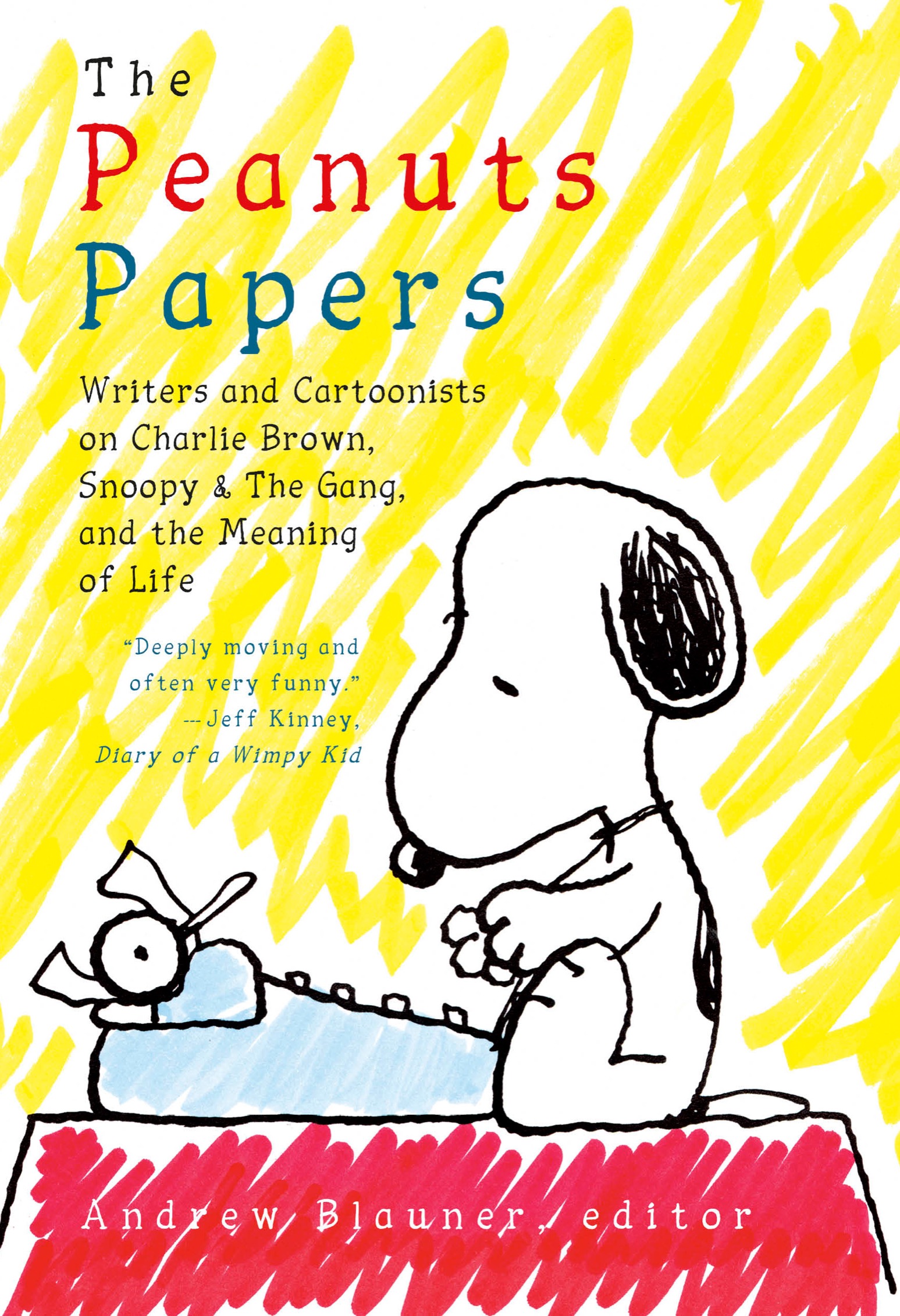





 early twenty years after the death of Charles M. Schulz, in the midst and perhaps the throes of the twenty-first century, there still seems so much to say about Peanuts, the singular comic strip that occupied the artist for the greater part of his life and, through a miraculous ensemble of hand-drawn children and an independent-minded beagle, won over the world. The book in your hands proves just how eager people are to think and write about the strip: over two-thirds of its pieces have been newly composed for this volume, and only two of the previously published essays reprinted here were written before 2000. To a degree that his cartoonist colleagues would surely have envied, Schulzs creations, those lil folks dreamed up in a time and place now fairly distant from us, speak as powerfully as ever to so many people, including, as this book shows, some of the finest writers and cartoonists working today.
early twenty years after the death of Charles M. Schulz, in the midst and perhaps the throes of the twenty-first century, there still seems so much to say about Peanuts, the singular comic strip that occupied the artist for the greater part of his life and, through a miraculous ensemble of hand-drawn children and an independent-minded beagle, won over the world. The book in your hands proves just how eager people are to think and write about the strip: over two-thirds of its pieces have been newly composed for this volume, and only two of the previously published essays reprinted here were written before 2000. To a degree that his cartoonist colleagues would surely have envied, Schulzs creations, those lil folks dreamed up in a time and place now fairly distant from us, speak as powerfully as ever to so many people, including, as this book shows, some of the finest writers and cartoonists working today.

 harles Schulzs great comic strip has hardly lacked for admirers or attention since it first appeared in 1950in itself somewhat surprising, since the strip had a long ramp-up to sublimityand so to join in the ranks of those who sing its praises might seem as redundant as Charlie Brown taking one more run at that football. But one point in particular is perhaps not made often enough, and so still worth makingthat, for all of its charm and, and for all the television specials drawn from it that rightly occupy a place of affection in our revolving American holidays, Halloween to Christmas and back again, the actual comic spirit of the strip at its best, from the early 1960s to the mid-1970s, is astoundingly, rewardingly, bleak and mordant.
harles Schulzs great comic strip has hardly lacked for admirers or attention since it first appeared in 1950in itself somewhat surprising, since the strip had a long ramp-up to sublimityand so to join in the ranks of those who sing its praises might seem as redundant as Charlie Brown taking one more run at that football. But one point in particular is perhaps not made often enough, and so still worth makingthat, for all of its charm and, and for all the television specials drawn from it that rightly occupy a place of affection in our revolving American holidays, Halloween to Christmas and back again, the actual comic spirit of the strip at its best, from the early 1960s to the mid-1970s, is astoundingly, rewardingly, bleak and mordant.